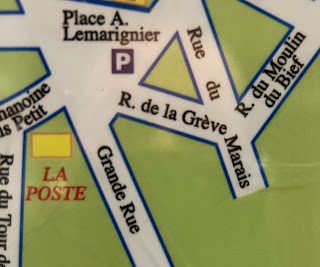Caen and Ouistreham Group in WhatsApp Community
Have you tried setting-up a WhatsApp Community, yet? If you
have been using WhatsApp with work colleagues or with friends for a while, then
it is easy to do. A WhatsApp Community is a dialogue space to share an interest.
The Community can grow and so you can divide it into Groups. In October 2024 we
started a WhatsApp Community called French Travel and Books, and designed a logo of open books in the colours of the French flag:
WhatsApp Group
Soon, we realised it was a broad topic and so began to
create Groups within the Community to share news and ideas for regions and cities.
The aim began to form that it would be a space for collecting favourite holiday
reading for visitors to these places. I am interested in Ouistreham and Caen
because I completed fieldwork in November 2024, and the WhatsApp Group ran live alongside the travel and my stay in the port town.
Fieldwork in Ouistreham
During my fieldwork in the town I was drawn to the cluster of older buidlings around the square called Place A. Lemarignier. This was initially because I was meeting with Sophie, the artist in residence in a converted fishing house overlooking the square but also because I was drawn to this higher ground and the street name, Grande Rue.
As you can see on my inset map the old post office overlooks the square, too. It no longer operates as the town post office but the building still has its plaque just over the door, please see my photograph below
I was so pleased that I had captured a photograph of the old post office here when I discovered this passage in the novel we were reading together in the WhatsApp group:
❦
Thank you, too, to photographer, Mark Stothard for sharing this image from his fieldwork in Ouistreham Riva-Bella. This one, below, dated 26.07.2025, shows clearly the slope of the road as it rises up to the church on Le Bourg, the old town centre and the square called - Place A. Lemarignier on the sketch map at the top of this post:
Here is the Maigret novel in English translation if you'd like to read more
Please cite our magazine blog. To cite this post:
Mansfield,
C. (2024). Caen and Ouistreham Group in WhatsApp Community. Travel
Writers Online ISSN
2753-7803 [Online Accessed 15.08.2025]
<https://travelwritersonline.blogspot.com/2024/10/caen-and-ouistreham-group-in-whatsapp.html>
Please help us reach new readers with a Share or Comment below


.JPG)





Planning a tropical getaway? Don’t miss out on Seabeach Delight—your go-to for the perfect Andaman Nicobar package for family, tailor-made Andaman and Nicobar tour packages, and romantic Andaman tour packages for couple. They also provide Andaman tour packages without hotel and special honeymoon packages in Andaman. Contact +91-9679597659 or +91-7063995196 for bookings!
ReplyDeleteThank you for posting a comment to our magazine blog for travel writers and academics.
Delete